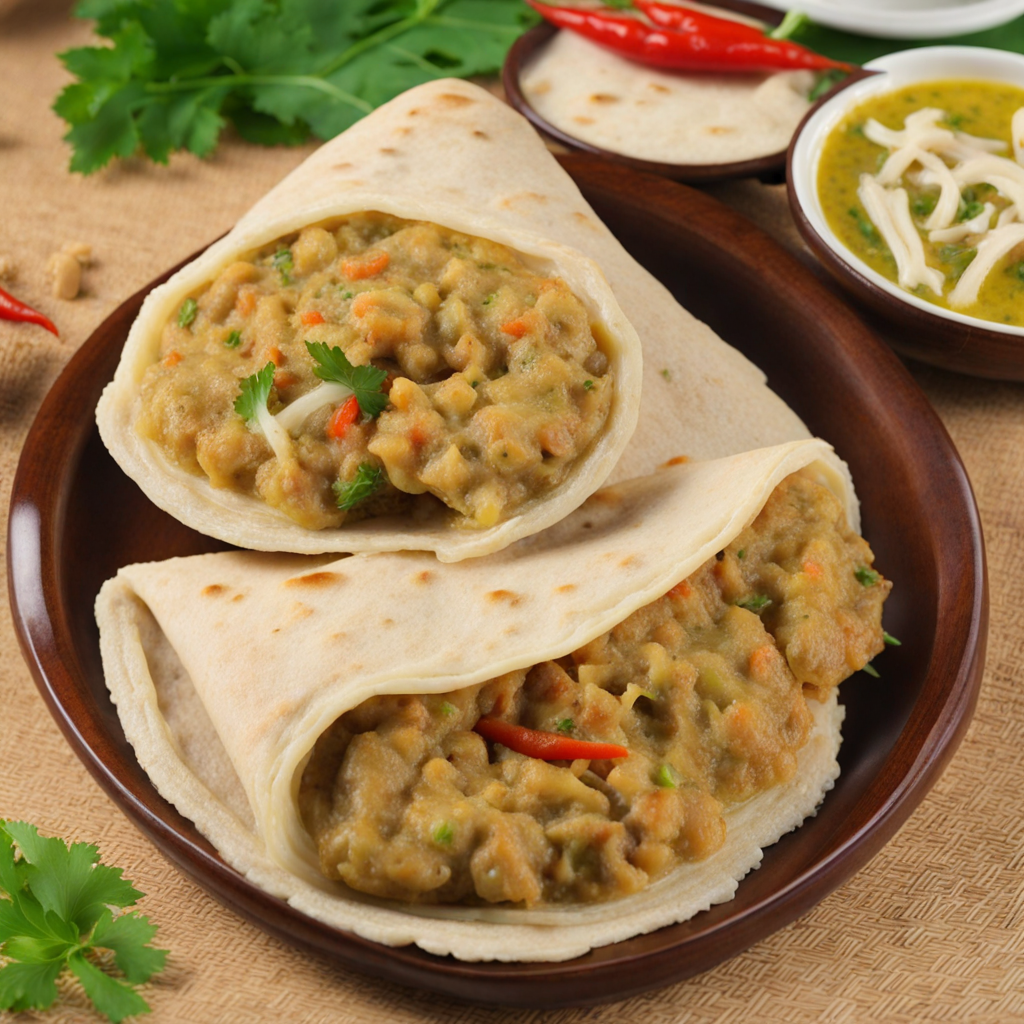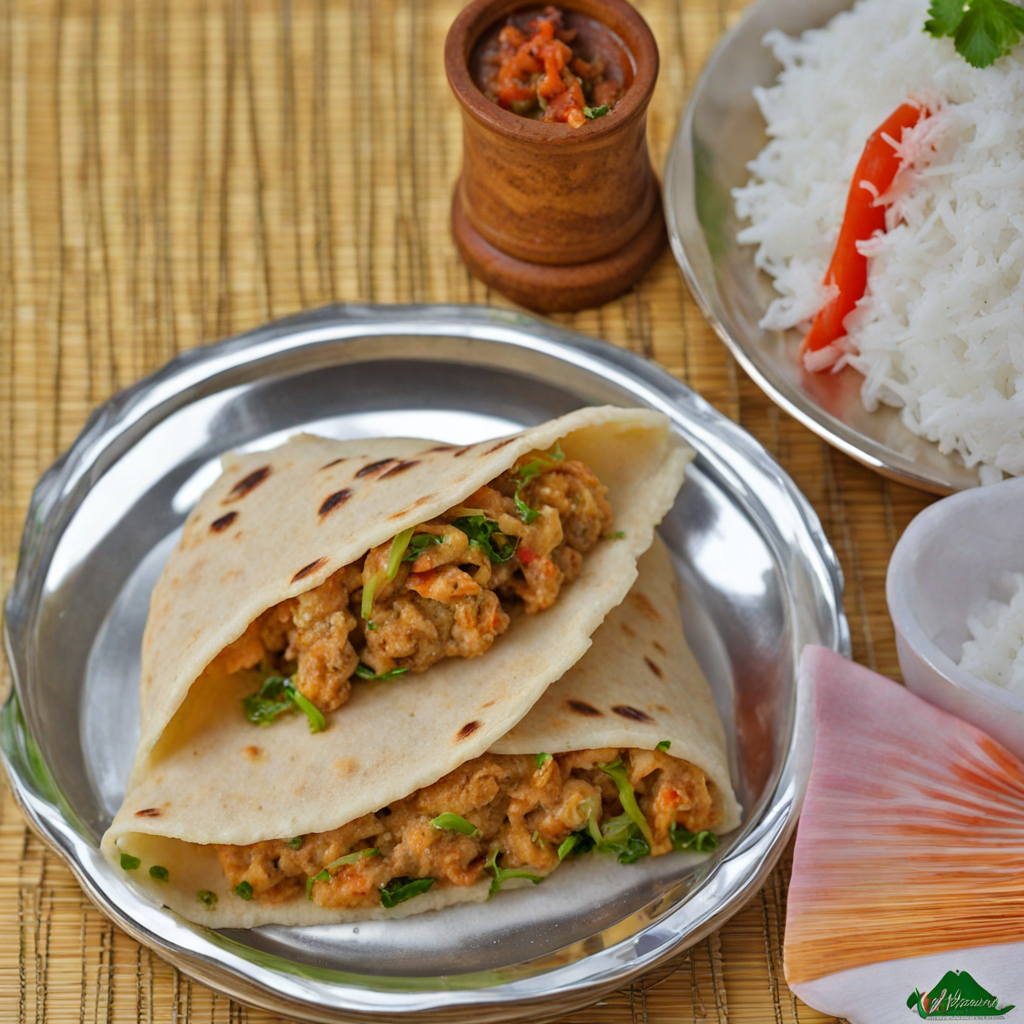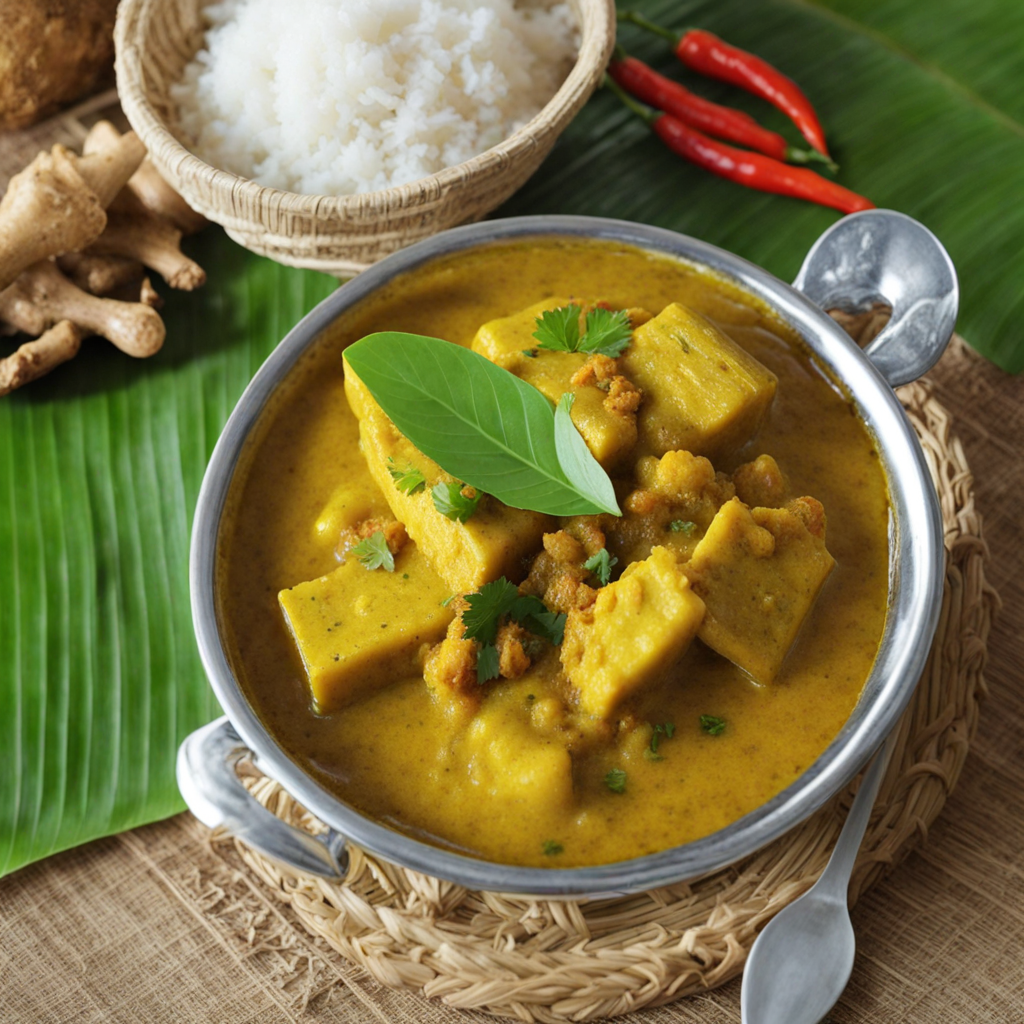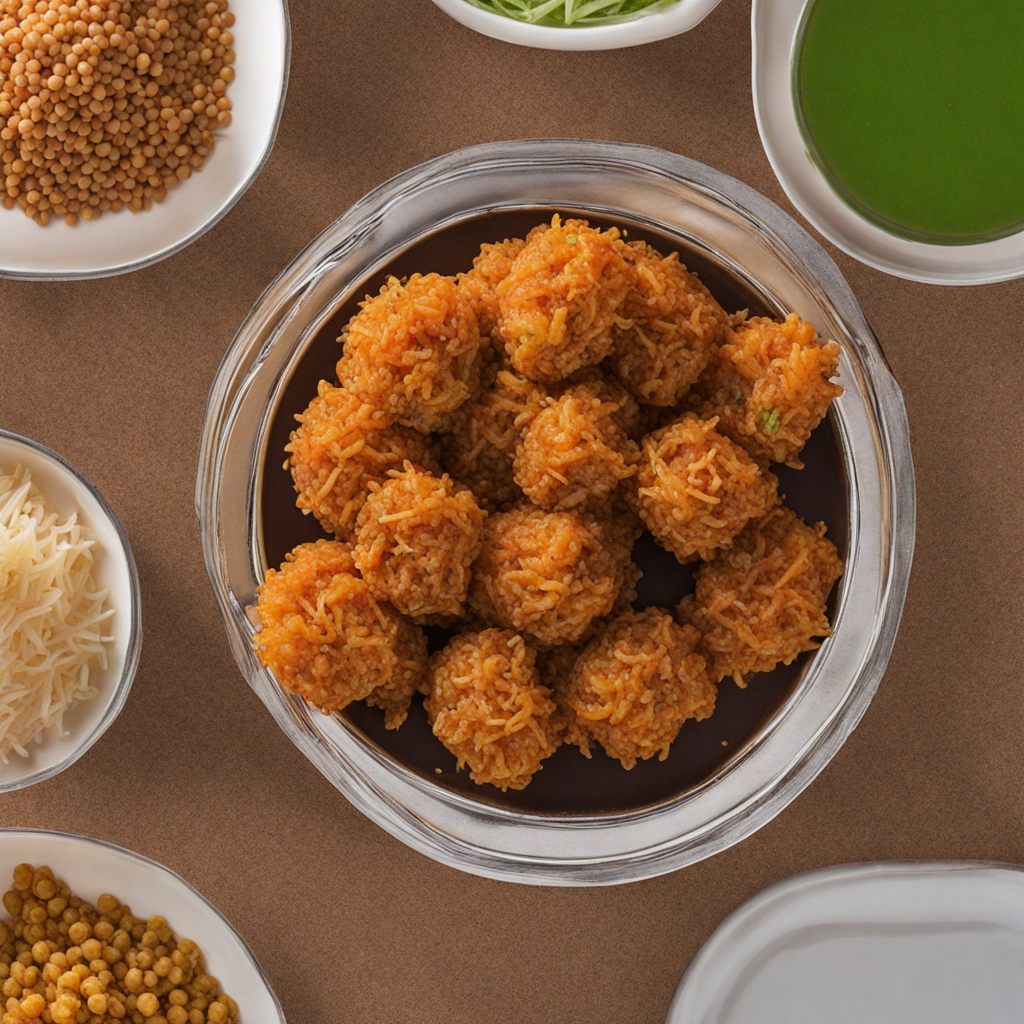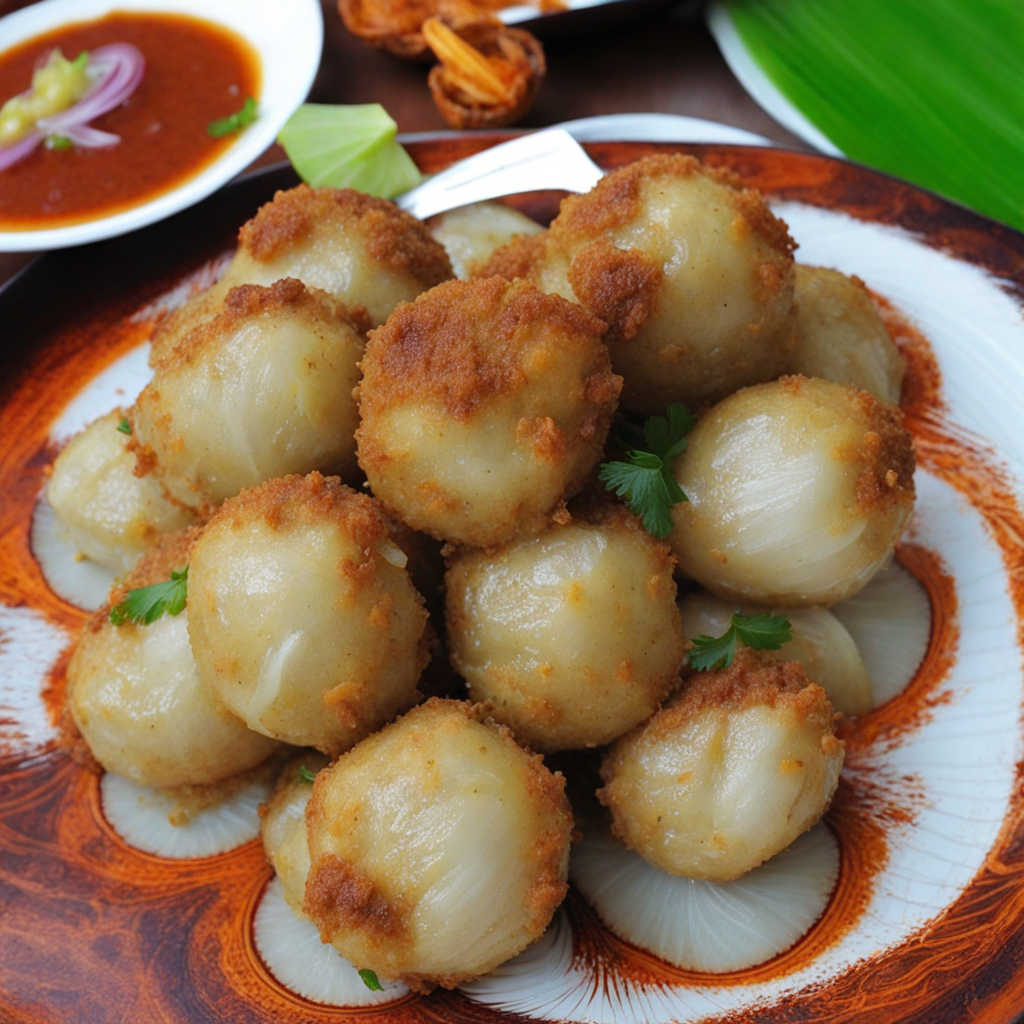Masroshi
Masroshi is a delightful Maldivian dish that showcases the vibrant flavors and culinary traditions of the islands. This savory treat features thinly rolled dough that is stuffed with a tantalizing mixture of tuna, coconut, and aromatic spices. The filling is typically made from fresh, flaky tuna, which is a staple in Maldivian cuisine, combined with grated coconut that adds a touch of sweetness and texture, and seasoned with ingredients like onions, chilies, and lime. The result is a harmonious blend of flavors that captivates the palate with every bite. Traditionally, Masroshi is prepared by hand, with the dough rolled out into thin circles, making it a labor of love that reflects the rich cultural heritage of the Maldives. Once filled, the dough is folded over to encase the savory filling, creating a pocket of deliciousness that is then pan-fried to a golden crisp. This cooking method not only enhances the flavors but also creates a satisfying crunch that contrasts beautifully with the tender filling inside. Masroshi is often enjoyed as a snack or light meal, making it a popular choice among locals and travelers alike. It is commonly served with a side of spicy chili sauce or a tangy dip, which adds an extra layer of heat and flavor. Whether enjoyed at a bustling market, a beachside café, or in the comfort of home, Masroshi is a must-try dish for anyone looking to explore the unique and delicious tastes of Maldivian cuisine.
How It Became This Dish
The History of 'މަސްރޮށި' (Mas Huni) from the Maldives Mas Huni, a beloved traditional dish from the Maldives, embodies the essence of Maldivian cuisine and culture. This dish, a simple yet flavorful combination of tuna, coconut, onion, and chili, has a rich history that reflects the archipelago’s unique geography, its people, and their maritime lifestyle. Origins of Mas Huni The Maldives, a nation comprised of over 1,000 coral islands, has a long-standing relationship with the sea. Fishing is not just a means of sustenance; it is an integral part of the Maldivian identity. The abundance of tuna in the surrounding waters has made it a staple ingredient in local diets. Historical records suggest that tuna fishing in the region dates back centuries, with the earliest inhabitants of the islands relying heavily on the ocean for food. Mas Huni, which translates directly to "fish and coconut," likely emerged as a practical dish rooted in the traditions of coastal communities. The use of fresh ingredients, particularly the local skipjack tuna, is a hallmark of Maldivian cooking. The dish combines finely shredded fish with grated coconut, onions, and chili peppers, creating a vibrant mix that is both nutritious and flavorful. Cultural Significance Mas Huni holds a special place in Maldivian culture, often enjoyed as a breakfast dish. Traditionally, it is served with flatbread known as "roshi" or "chapati," making it a fulfilling meal to start the day. The dish is not just food; it is a social experience, often shared among family and friends, emphasizing community and togetherness. Moreover, Mas Huni is deeply tied to the Maldivian way of life, reflecting the islanders' reliance on the ocean and their resourcefulness in using available ingredients. The inclusion of coconut, an essential element in many Maldivian recipes, showcases the importance of this fruit, which is used in various forms, from fresh to dried, in many local dishes. The dish also highlights the Maldivians' skill in balancing flavors and textures. The richness of the tuna is complemented by the sweetness of the coconut, the sharpness of the onion, and the heat of the chili, creating a harmonious blend that is both comforting and invigorating. Development Over Time As the Maldives has evolved, so has Mas Huni. The dish has remained largely unchanged in its core ingredients, but modern culinary influences and globalization have introduced variations and innovations. In recent years, tourism has surged in the Maldives, with visitors from around the globe eager to experience the local culture and cuisine. This influx of tourists has led to a greater appreciation for traditional dishes like Mas Huni. Many resorts and restaurants offer their own interpretations of the dish, often incorporating gourmet elements or adapting it to suit international palates. For example, some might add avocado or different herbs, while others may serve it with an array of condiments that enhance the dining experience. Despite these adaptations, the authenticity of Mas Huni remains intact. Many families continue to prepare the dish using traditional methods, passing down recipes through generations. This continuity ensures that the cultural significance of Mas Huni is preserved, even as the broader culinary landscape changes. Mas Huni in Contemporary Maldivian Life In contemporary Maldivian life, Mas Huni has also found its way into the global food scene. As interest in international cuisines grows, Maldivian dishes, including Mas Huni, are increasingly featured in culinary festivals and events worldwide. This exposure has allowed people from different cultures to appreciate the simplicity and depth of flavor that characterize Maldivian food. Social media platforms have further accelerated this phenomenon. Pictures of beautifully plated Mas Huni, alongside the vibrant flatbread, circulate online, captivating food lovers and tourists alike. This visibility not only promotes Maldivian cuisine but also fosters a sense of pride among Maldivians, reinforcing their culinary heritage. Conclusion Mas Huni is more than just a meal; it is a reflection of the Maldivian way of life, steeped in history and tradition. From its origins rooted in the islanders' reliance on the sea to its place at the breakfast table, this dish encapsulates the spirit of the Maldives. As it evolves and adapts to modern influences, Mas Huni remains a symbol of cultural identity and community, cherished by locals and celebrated by visitors. In the pursuit of culinary authenticity, Mas Huni stands as a testament to the resilience and creativity of the Maldivian people. It is a dish that invites everyone to partake in the island's rich history and vibrant culture, making it an essential element of the Maldivian culinary landscape. As the world continues to discover the flavors of the Maldives, Mas Huni will undoubtedly remain at the forefront, serving as a delicious reminder of the islands' heritage and the enduring connection between its people and the sea.
You may like
Discover local flavors from Maldives


